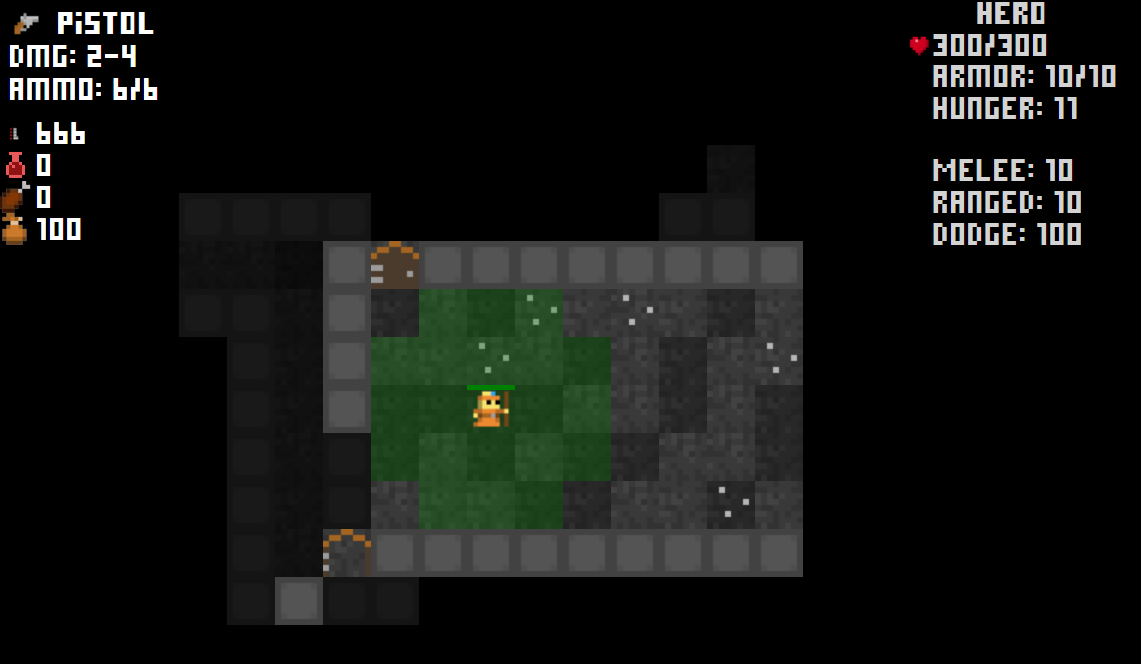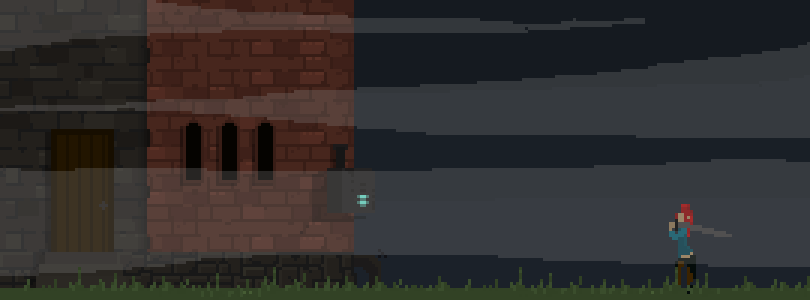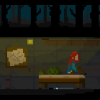Welcome again, fellow game developers and enthusiasts!
When you're prototyping to test new game mechanics ideas, the visuals of the game should not be that important - it is not the graphics that matter during that period. We even have this whole "programmer art" term to define all these temporary assets.
Well, that's theory. And it seems it doesn't work in my world.
I mean there is an obvious difference between prototyping a game in a large dev studio and a single person who is creating a game as a hobby project in their spare time. You struggle with the lack of resources, from which the most critical are the time necessary to get things done, and the determination to continue with the work.
In the first game prototypes that I've created I did not put too much emphasis on the visual side. I had a lot of experience with composing the user interface, but only for pure business applications. As a result, my game prototypes were more similar to Excel than to something that might be perceived as enjoyable. Well, I maybe some people might find Excel fun and enjoyable... but I strongly believe that they are a minority.
Anyway, figuring
out w
hether a particular gameplay mechanic is fun meant more to me than being able to see cool stuff on the screen.
Or so I thought - but after some time spent on a project I found myself getting less and less enjoyed with my game idea. Even if the mechanics were good, the lack of good-looking visuals was hurting my gameplay experience. And if I stopped enjoying my hobby project, I abandoned it.
Old vs new: comparing how the initial visuals looked like in one of the game prototypes vs their refined version. One can surely agree that finding any fun in the left one would
hardly
be possible.
Even though I was aware of the fact that these visual aspects are not the ones that I should be focusing on at this given moment, I simply couldn't focus on the game mechanics. Playing the prototype was not fun anymore.
Of course I could start using existing free assets. And in some cases doing so was in fact better. But then came another problem: I just felt that it is not something that I have created myself. This reduced the amount of enjoyment I had from creating a game. Sounds weird, I know.
Prototype of a
"Steam rogue" game, using pre-defined assets.
Therefore, I changed the way in which the new prototypes were created. I've upgraded the visuals by learning how to draw stuff so that it looks not as crappy as before, and now I simply feel better when I am working with my prototypes. Of course such approach takes more time. I am pretty sure that most of the visuals will have to be thrown out, or at least recreated in the long run. That many of them won't make it to the final game, as they will be not fun enough to get through the prototyping phase. On the other hand, it simply wouldn't be possible for me to work without creating these better looking visuals. And as I definitely want to feel good when spending my free time on a hobby, I see no ther way.
But maybe that "prototype with ugly visuals" approach is how the prototyping should be made? If the visuals and usability of the UI are crappy, but the game is still fun and enjoyable, maybe that's when the designer can be sure that their game idea will simply rock? And adding nice visuals will only further improve player's experience, resulting in a top-notch game? I don't know, maybe that's how we should approach to creating prototypes. It is just that this way of working didn't work for me.






Prototyping with ugly programmer art is absolutely how you should start a project that you're not sure about. If you spend time/money on artwork for a boring game, it's going to feel like a waste (even though the experience will be useful for future projects).
As for not using free assets, and not feeling like you made the game. To that, I can only say you should get over it. :) We're standing on the shoulders of giants. Some people might look down their noses at people who use Unity as a game engine. Others might scoff at people who use XNA. Or if you use any extra code besides the core C#.Net libraries, well you're not a 'real' programmer. Pfft, as if. Real programmers code in assembly. No way man, if you want to be awesome, you need to design and solder your own motherboard... At some point in this paragraph, I hope you said, "Now that's just silly."
Most people looking down their noses at the "fake" game programmers, have never released a game in their life. People that can get past that hangup, use Unity, free assets, and actually RELEASE GAMES. :)
That said, you should spend some time on visuals just to keep your own motivation up. Working on the game with that first black and grey image there is going to be tough for all but the most disciplined mind. Sometimes one of the best motivators is putting in a little eye-candy, or sound effects to start making a crappy project look like an actual game. :) That was actually a "Tip from your Uncle Eck" in one of my journal posts last year:
https://www.gamedev.net/blog/1922/entry-2261631-switching-gears-to-grid-based-fantasy/
The steam rogue game looks pretty slick. :)